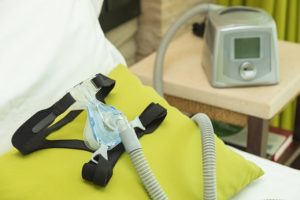 Sleep apnea patients are at an increased risk for blood clots in the lungs—known as pulmonary embolism. Patients who have had at least one pulmonary embolism have a 30 percent higher risk of developing another one in their lifetime. A future pulmonary embolism (PE) carries with it a nine percent higher risk of mortality. The main mode of treatment for a pulmonary embolism is an anticoagulant, but it is associated with a risk of bleeding.
Sleep apnea patients are at an increased risk for blood clots in the lungs—known as pulmonary embolism. Patients who have had at least one pulmonary embolism have a 30 percent higher risk of developing another one in their lifetime. A future pulmonary embolism (PE) carries with it a nine percent higher risk of mortality. The main mode of treatment for a pulmonary embolism is an anticoagulant, but it is associated with a risk of bleeding.
Uncovering contributing factors for pulmonary embolism can help doctors relay information to their patients, which will help them reduce the risk of a future pulmonary embolism and, in turn, reduce the risk of dying. One contributing factor that has been identified is obstructive sleep apnea (OSA), which also shares many of the same risk factors with pulmonary embolism.
Advertisement
Lead investigator of the study, Dr. Alberto Alonso-Fernández, explained that obstructive sleep apnea is a risk factor for pulmonary embolism. With that said, there were no studies that examined whether OSA can cause a recurring pulmonary embolism before the present one.
His study looked at 120 patients for five to eight years after their first pulmonary embolism. Patients were monitored for potential sleep apnea, and the researchers found that 19 percent of the patients had recurring pulmonary embolism. Of those who suffered from a recurring pulmonary embolism, 16 percent suffered from sleep apnea.
The study found that patients suffering from OSA had a high risk of recurring pulmonary embolism. The Apnea-Hypopnea Index, which measures the severity of sleep apnea, and nocturnal hypoxemia—an abnormally low concentration of oxygen in the blood, particularly while sleeping—are related risk factors for recurring pulmonary embolisms.
Dr. Alonso-Fernández claims that “PE is the result of Virchow’s classic risk triad, namely vascular endothelial impairment, stasis of blood flow, and/or increased coagulability. OSA could hypothetically affect all three mechanistic pathways.” Hypoxia causes a host of problems, namely, a slowed intravenous flow and increased coagulability. However, these can be improved with CPAP—continuous positive airway pressure—in the form of a ventilator.
There has been a greater focus on what leads to a single PE, but researchers still don’t know what exactly causes recurring PE. They suggest that sleep apnea is an independent risk factor for recurring pulmonary embolism even after adjusting for other contributing factors, such as a high body mass index and obesity.
Obesity is another potential contributing risk factor for recurring PE, as it is linked to a sedentary lifestyle and a slow blood flow in the legs (venous stasis). Dr. Alonso-Fernández speculates that OSA and obesity may work together to cause coagulation of the blood, which could in turn strengthen the likelihood of recurring PE.
Advertisement
Being aware of the impact that sleep apnea has on recurring pulmonary embolism is important, as it can help doctors identify patients who may be at risk for a secondary pulmonary embolism and to instruct their patients on how to treat and reduce their risk of both sleep apnea and pulmonary embolism.
The study concluded that the potential of CPAP—continuous positive airway pressure—and oral anticoagulants to reduce the risk of recurring PE in patients with both PE and OSA warrants more study.
Related: Untreated sleep apnea linked to aggressive melanoma
